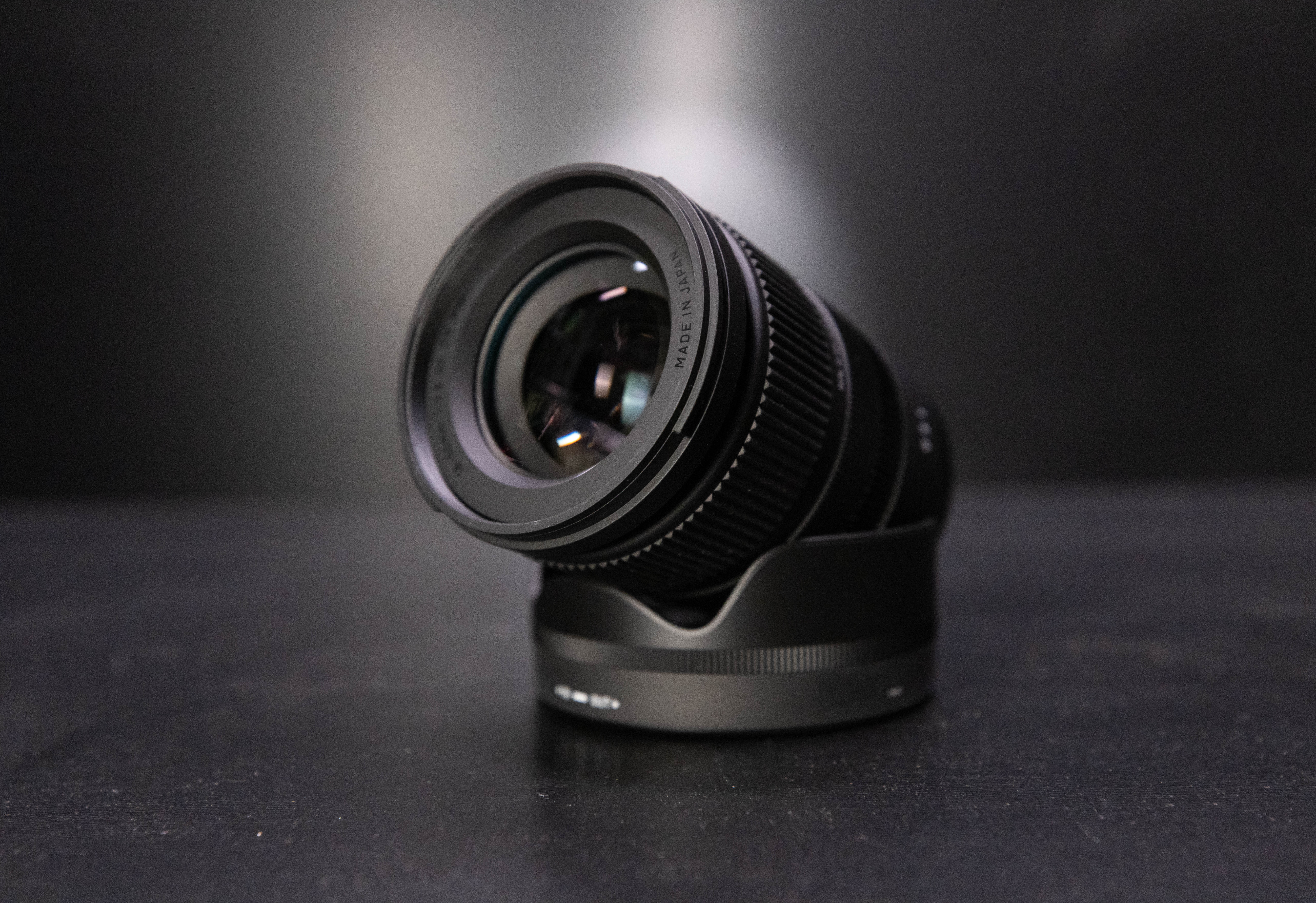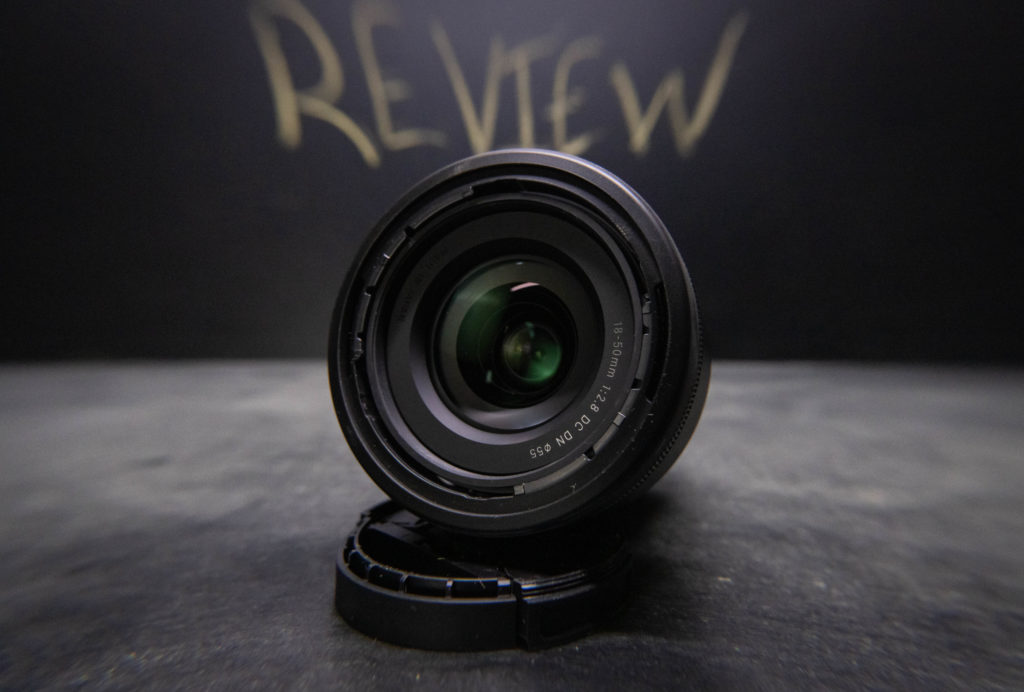Small, lightweight, and swapped focus and zoom ring placement did not keep me from thoroughly enjoying the new Sigma 18-50 F2.8 DC DN | Contemporary zoom lens. The Sigma 18-50mm has a lot going for it. Budget-minded Mirrorless APS-C format shooters might find an all-around lens gem with the $549 Sigma 18-50mm. NOW, this is where I start showing example photos and footage, but for my life, I cannot find the photos I took with the Sigma 18-50mm anywhere in my catalog. For this, I am sorry. Am I the only one whose brain has turned to mush during this mess? 
During my review, I found Sigma’s first APS-C size mirrorless zoom lens is quite versatile with the full-frame equivalent zoom range of 27-75mm. The zoom range on the Sigma 18-50 allows users to frame up for wide shots and a portraiture framing. This range allowed me to keep the Sigma 18-50mm on my camera and still be able to capture most of the shots I wanted during my photo-walkabouts.

What was surprising to me was the Sigma 18-50mm macro close-up capabilities. I was able to get the lens and camera very close to my subject, particularly some red raspberries I had growing in the garden. By the way, raspberries are a great fruit to grow and taste so much better when picked right off the plant. Just get the variety that grows fruit more than once a year.
The macro ability is due to Sigma’s maximum magnification of 1:2.8*1 and a minimum focusing distance of just 12.1cm or slightly more than 4.5 inches. I know many of Sigma’s Art lenses also have good near-focus or macro capabilities, and I think it is rather nice to see what I consider a budget lens with this kind of macro flexibility.
The bright F2.8 aperture provides a shallow depth-of-field for some quite interesting macro photography results. Sigma keeps the F2.8 aperture throughout the lens’ entire zoom range. A bright, consistent F2.8 is good news for those photographers who shoot wide and then jump to the long end of zoom for some detail work.
Many video shooters have learned to work this way to capture coverage of a scene, and since I am usually more of a video shooter, I appreciate a lens with a range-wide enough and long enough to do so. I found the bokeh smooth and not distracting from the photo’s subject.
Let’s turn to the size and weight of the Sigma 18-50mm F2.8 DC DN | Contemporary lens. The Sigma has to be the smallest and lightest in its class, with a length of 74.5mm/2.93 inches and a weight of 290g/0.64 pounds. How did Sigma make an F2.8 constant aperture 18-50mm small and lightweight?
Sigma used a polycarbonate called Thermally Stable Composite (TSC) to construct the barrel, which has a thermal conductivity close to aluminum. According to Sigma, this polycarbonate ensures stable performance and good operability when used in changing temperatures. By deliberately using metal for some internal structure, the parts could be much thinner and have a higher rigidity, ensuring the lens can stand up to frequent, heavy use.
Time will only tell if the polycarbonate 18-50mm stands the test of time. The Sigma 18-50mm certainly felt good and sturdy in my hands.
The Japanese lens manufacturer used a stepping motor for autofocus to keep the Sigma 18-50mm F2.8 DC DN | Contemporary lens ideal sizing and weight. Since my usual still photography camera is a Canon R5 and Canon zoom lenses, I expected the Sigma 18-50mm to be slower to focus. While the lens was a touch slower, some shooters likely will not notice the difference.
The Sigma 18-50mm autofocus was fine in most situations, and switching from auto to manual was simple and easy. For video work, I found the Sigma’s rear placement of the focus ring a bit out of place from the usual front ring placement. Once I got used to the arrangement, I was good to go. Autofocus for video and the stepping motor was not as smooth as I have accustomed to modern mirrorless systems. This is not meant to knock the Sigma but a comment on modern cinema cameras and the incredible autofocus features available.
I found the lens struggled to handle the flare and contrast well when shooting reflective light. In my case, I shot photos of the sun reflecting off the Stone’s River in Tennessee. This was not a deal-breaking but know your gear and where it might succeed and what you might want to avoid.
All in, the Sigma 18-50mm F2.8 DC DN | Contemporary lens is an all-around lens many will keep on their mirrorless cameras. The flexibility of a bright F2.8 lens with a wide to medium zoom range checks many boxes for many users. With a $549 price tag, you will struggle to find a better deal.
Sigma 18-50mm F2.8 DC DN | Contemporary Key Features
- Lens construction: 13 elements in 10 groups, with 1 SLD and 3 aspherical elements
- Inner focus system
- Compatible with high-speed autofocus
- Stepping motor
- Support DMF and AF+MF
- Super Multi-Layer Coating
- Petal type lens hood (LH582-02)
- Mount with dust and splash resistant structure
- Compatible with SIGMA USB DOCK UD-11 (sold separately / for L-Mount only)
- Designed to minimize flare and ghosting
- Every single lens undergoes SIGMA’s proprietary MTF measuring system
- 7-blade rounded diaphragm
- High-precision, durable brass bayonet mount
- “Made in Japan” craftsmanship


